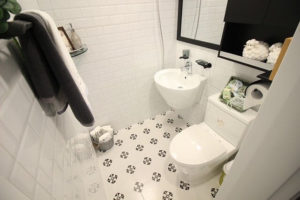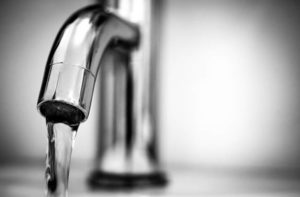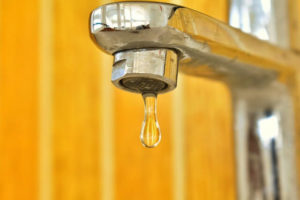After countless hours spent weeding, aerating, watering, mowing, and landscaping, you’ve finally done it—you’ve grown a beautiful lawn. It would be a shame if something…were to happen to it! If you find yourself in need of sewer repair services, you might just need to rip that baby up to get to the pipes under your lawn. But wait, isn’t there any way you can avoid tearing up your beautiful, lush grass? Lucky for you and your green thumb, there is. Introducing trenchless sewer line repair! What is it? How does it work? These are some of the questions that I want to take some time to answer right now. What Is Trenchless Line Sewer Repair? Perhaps the simplest way to explain trenchless sewer line repair is to compare it to the traditional method. When most homeowners and lawn enthusiasts think of sewer line repair, they usually picture heavy machinery digging up their yard to get to the lines below. With this type of repair job, the plumber must dig trenches along the route of the pipes in order to remove them and replace them or make the necessary repairs. As the name implies, trenchless sewer repair fixes the problem without … Continue reading Need Sewer Repair? This Innovative Solution Could Save Your Lawn

Sewer Replacement: When Is It Time to Replace a Sewer Line?
Sometimes it’s possible to fix a plumbing problem with drain cleaning and proper maintenance. Other times, you may need to do something more drastic to prevent serious damage. Sewer replacement can be expensive, but when the sewer lines have deteriorated, it could be your only option. If you’re not sure when to replace a sewer line, take a look below at a few reasons it might be time to start thinking about it. Your Pipes Are Just Getting Old Do you know when your home was built? Is it 50 years old? 100? If you live in an older home, chances are pretty good that your sewer system is old, too. As sewer pipes age, they are more prone to failure. Furthermore, the materials that people used for sewage systems back in the day tend to be more likely to leak from corrosion—in many cases, older homes have cast iron or galvanized steel piping. If you have never scheduled a sewer replacement and you live in a home built before the 1970s, it’s probably time to talk to a professional. Your Pipes Are Constantly Clogging It’s no secret that sometimes pipes clog. Toilets and sinks and shower drains often clog … Continue reading Sewer Replacement: When Is It Time to Replace a Sewer Line?

Emergency Water Leak in Your Home? What to Do to Prevent Damage
Discovering an emergency water leak in your home is more than an annoyance. If you don’t fix it quickly, it can lead to a repair bill that is in the thousands. In addition to ruining your flooring, carpet, walls, and possessions, it can also cause dangerous mold to grow. Do you have a leaky pipe or faucet in your home? No need to fear! Just follow these tips until you can find a professional to fix it. Turn off the Water After identifying where the source of the emergency water leak is located, the first thing you should do is shut off your home’s main water valve. While this doesn’t solve the problem, it does allow you to stop the leak from causing any more damage. In some cases, you won’t need to turn off the water for the entire house. For instance, if you have a leaky faucet or toilet, simply turn off the emergency valves located beneath the sink or behind the toilet. Dry the Area to Prevent Damage Even if you catch the leak before your whole home is flooded, any water that seeps into your carpet or through the floorboards can lead to serious damage. The … Continue reading Emergency Water Leak in Your Home? What to Do to Prevent Damage

Slab Leak Detection: How to Tell If You Have This Serious Problem
At Custom Plumbing of Arizona, slab leaks are one of the most destructive problems that we help our clients solve. Our slab leak detection service gets to the root of the problem quickly so that we can stop the damage before it gets too bad. Want to learn more about this serious problem so you can be prepared? Keep reading our blog below. What Is a Slab Leak? A slab leak is plumber-speak for when a water line below the concrete foundation of a building has developed a leak. These leaks can occur on the pressure or drainage side of a home or business. Leaks that develop on the pressure side are usually easier to detect, but they can cause significant damage if you don’t know the signs. On the drainage side of the building, slab leak detection can be a bit more difficult. Such leaks can go on for years and literally cause the foundation of a home or commercial building to collapse from the erosion. Common Slab Leak Causes It’s not always possible to determine what causes a slab leak, but here are a few common causes. Damage from Installation It’s not uncommon for pipes to sustain damage … Continue reading Slab Leak Detection: How to Tell If You Have This Serious Problem

Emergency Plumber Phoenix: What to Do If You Have a Leaky Pipe
It doesn’t take a lot of water to cause a lot of damage to your home or belongings. That’s why you need to fix any leaky pipes as soon as possible. If you can’t do it on your own, you need to find an emergency plumber in Phoenix fast. The first thing you need to know is how to spot the signs of a leaky pipe. If your leaky pipe runs horizontally across the ceiling it will be pretty easy to spot—either the water will drip through the ceiling material or will form a bulge that is difficult to miss. For pipes running vertically and horizontally in the walls, it can be a little trickier to notice. Be on the lookout for discoloration or bubbling where the wall meets the floor as well as damp carpeting and mold. Once you realize that you have a leaky pipe, it’s time to take action. Emergency Plumber Phoenix: Find the Leak The first thing that you’ll have to do is find where the leak is coming from in your wall or ceiling. To do so, you’ll unfortunately have to remove a portion of the wall or ceiling so that you can locate the … Continue reading Emergency Plumber Phoenix: What to Do If You Have a Leaky Pipe

